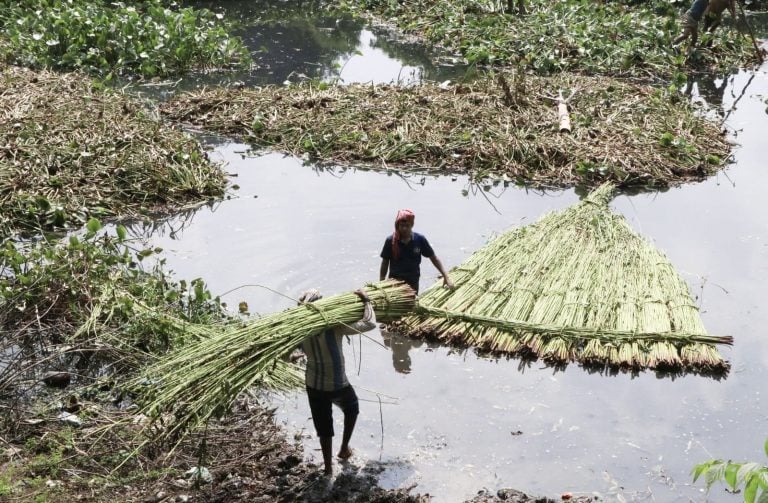News Flash
News Flash

By Md Aynal Haque
RAJSHAHI, July 21, 2025 (BSS)- Harvesting of jute is progressing fast across all eight districts under Rajshahi division in the current season, with growers expecting a better yield amid favorable weather and frequent rainfall.
At present, most of the farmers, along with their family members, are engaged in harvesting, retting, and separating jute fibers, creating seasonal job opportunities in the region.
According to the Department of Agricultural Extension (DAE), jute farming has exceeded the target this season as farmers' interest in cultivating the cash crop has increased, including in the vast Barind tract.
The newly harvested jute has started appearing in local markets on a limited scale and is expected to be available in larger quantities within the next 15 to 20 days with the start of full-scale harvesting and retting.
Traditionally, jute is harvested manually, with farmers cutting the plants near the base. After harvesting, the stalks are soaked in water for retting to ease fiber separation, followed by sun-drying of the extracted fibers.
DAE sources said around 17,305 hectares of land have been brought under jute cultivation in Rajshahi district this year against the target of 17,185 hectares.
Dr Azizur Rahman, Additional Director of the DAE, said farmers are optimistic about achieving a good yield this season, thanks to favorable climatic conditions. "Farmers are gradually adopting line sowing technology using seeder machines and ribbon-retting methods, which help reduce production costs, save seeds, and ensure higher-quality fiber," he added.
He also said the government has taken steps to encourage the cultivation of high-yielding jute varieties to boost production further.
Farmers across the region are expressing satisfaction with the current market prices of jute, which range from Taka 3,000 to Taka 3,800 per maund in local markets.
Sumanta Kumar, Field and Market Inspector of the Department of Agricultural Marketing, said the prices are expected to rise once full-scale marketing begins. He also noted that last year, prices initially started at Taka 1,400 to 1,500 per maund but eventually rose to Taka 5,200 to 5,500.
Siddiqur Rahman, a farmer from Debipur village under Durgapur upazila, said he cultivated jute on two bighas of land and spent about Taka 16,000 to 17,500. He expects to harvest around 20 maunds of jute valued between Taka 45,000 and 50,000, along with jute sticks worth another Taka 5,000.
Shahidul Islam, 54, of Paikpara village under Paba upazila, said the recent rainfall has filled ponds, canals, and beels with water, facilitating the retting process.
Abdur Razzaque, a farmer from Shreepur village in the same upazila, said the golden era of jute is returning due to rising prices and government initiatives, including the mandatory use of jute bags for packaging public food grains.
He, however, urged the government to take steps to control syndicates of middlemen and traders so that farmers can get fair prices.
Farmers believe that if current trends continue, the cultivation of jute will further increase in the coming years, reviving the past glory of the golden fiber.